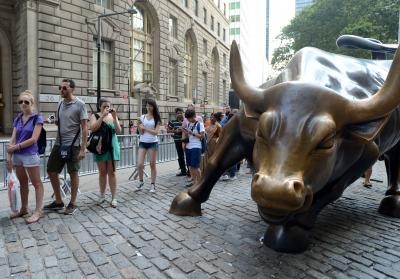
New York, The latest bull market for US stocks remains on the brink of expiring, with the benchmark S&P 500 just shy of the threshold that marks bear territory, MarketWatch reported.
The S&P 500 finished 0.1 per cent lower at 3,930.08 on Wednesday, after falling as far as 3,858.87 at its session low.
That was the index's lowest close since March 25, 2021, and left it 18.1 per cent below its record finish from early January. A close below 3,837.25 would mark a 20 per cent fall, according to Dow Jones Market Data, meeting the widely-used technical definition of a bear market, the report said.
The S&P 500 entered the correction territory -- a fall of 10 per cent from a recent peak -- last month, its second such foray this year.
A tough April for stocks has been followed by an ugly May, with equities suffering as investors continue to dump megacap tech stocks and other highflying pandemic darlings amid investor jitters over inflation that continues to run historically hot and a Federal Reserve that is moving to quickly raise interest rates and otherwise tighten monetary policy in an effort to get those price pressures under control.
Hopes that an eagerly-awaited reading on April consumer price inflation on Wednesday would show inflation had peaked and help steady the ship offered little solace to the jittery investors.
The S&P 500 ended its last bull market on March 12, 2020, as the outbreak of the Covid-19 pandemic sent the stocks tumbling. The bottom of the pandemic-inspired bear market came on March 23, 2020, with the S&P 500 marking a 33.9 per cent fall from its bull market peak on February 19, 2020, MarketWatch reported.
Based on figures going back to 1929, the average bear market sees a peak to bear-market low decline of 33.5 per cent, and a median fall of 33.2 per cent, according to Dow Jones market data.
On an average, it has taken 80 trading days for the S&P 500 to hit its low after entering a bear market -- and a median 52 trading days, the data showed, the report added.


.jpeg)

